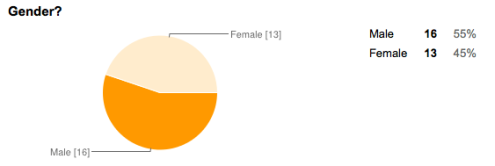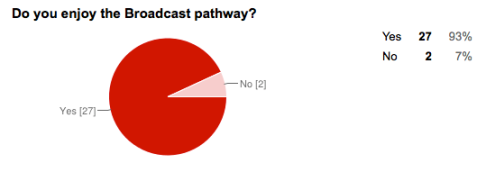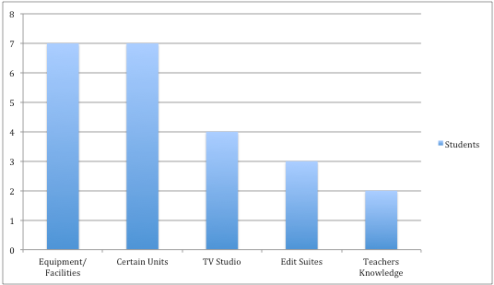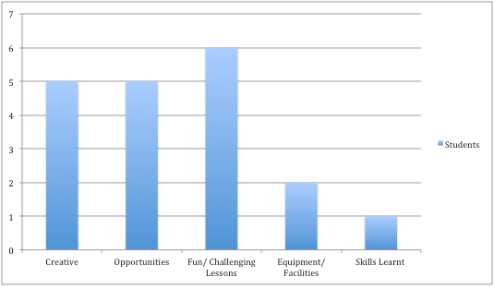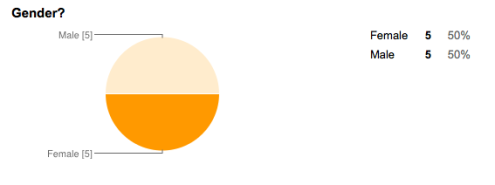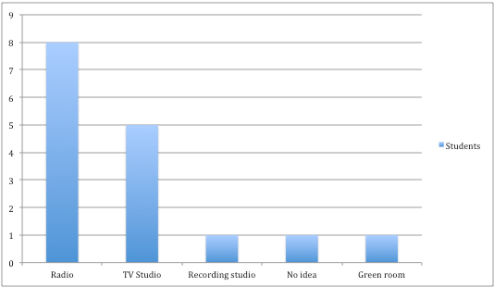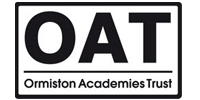Production Schedule
Initial Ideas
For my Final Major Project I want to film an interview with Mr Dodzo but focus on the crew who are filming him rather than Mr Dodzo himself. A voice over will discuss the main aspects of the Broadcast pathway and the visuals will show students actually using the equipment and organising the production.
Research
To begin my Primary research for my FMP I have created two questionnaires, one for broadcast students and one for every other pathway.
Broadcast Questionnaire.
https://docs.google.com/forms/d/1m8zLd2XQJ-t-kOAfC-XWbrpr3J7Q7KQz6-12Z3xTO_o/viewform
What questions I asked and why.
When creating my questionnaire I wanted to create one that was very precise to give me the exact answers I need. I thought about my FMP idea and created questions which would describe what people would want from a promotional video for Broadcast, taking into account what facilities students felt had the least recognition and what facilities were the students favourites.
1. Age
2. Gender
These questions should always be included in a questionnaire to distinguish between demographics. For example how teenagers differ from adults and how men differ from women. By asking for age and gender you can determine between target audiences by seeing which demographics are most interested in your product.
3. Do you enjoy the Broadcast pathway?
4. Why?
These questions allow me to analyse the best points about the broadcast pathway so that during my FMP I can advertise them the most.
5. What made the Broadcast pathway at BOA stand out from other schools?
If I am to create a promotional video for BOA I need to identify why students have decided to attend BOA rather than attending a different college or sixth form.
6. What part of the Broadcast pathway has the least recognition?
After being in the TV Green Room when another pathway was being filmed in the TV Studio I realised the majority of them didn’t even realise we had a TV Studio. This led me to creating this question to allow my FMP to cover all aspects of Broadcast, showing the facilities which most people don’t even know exist.
7. What stands out the most to you about Broadcast?
I thought that some facilities in Broadcast could have a longer running time then others. For example if everyone is aware of our radio studios but no one knows about our TV Studio then my FMP could be more in-depth about our TV Studio then the radio studios.
8. What has been the most enjoyable Unit?
Throughout my FMP I could also show students working on location or completing pre-production, therefore knowing students favourite units could allow me to cover them more than the other units which students find less appealing.
Broadcast Questionnaire Analysis
The majority of people (20) asked to complete my questionnaire were from the age of 17 to 20 years old.
I asked 13 female students and 16 male.
Out of 29 people I asked, only two said that they didn’t enjoy the broadcast pathway.
Why?
Five people said that they enjoy the course at it allows them to be creative and express themselves through film. Another five people said they enjoy it because of the opportunities available for each student. Six students said that they enjoy the fun and challenging lessons that they are delivered. Two people agreed that the student’s attitude and dedication makes the course enjoyable, whereas others stated that the industry standard equipment leads to the correct skills for the industry making the course preferable to any other course. The only negative response I received was that there were too many students and not enough teachers.
What made the Broadcast Pathway at BOA stand out from other Schools?
Thirteen people said that the equipment and facilities available to the Broadcast pathway made the course better than the courses available at other colleges/ sixth forms. Six people said that the opportunities were the most impressive, whereas three people said the professionalism of the course made it preferable along with the well-planned lessons. The teacher’s knowledge of the industry was preferred by two people along with the links BOA has to the industry. Only one person stated that the dedication of the staff and student made BOA stand out from other colleges and the last person said the specialism of the course made it stand out.
What part of the Broadcast pathway has the least recognition?
Seven people stated that the equipment has the least recognition even though thirteen people previously agreed that the equipment is what stood out to them about the Broadcast course. Certain units such as animation and legal/ ethical constraints are what seven students agreed have the least recognition on the Broadcast course. Four people said the TV studio has the least recognition and other pathways have begun using it since Broadcast doesn’t use it enough. Three people brought attention to the edit suites as not many people, including broadcast, know about them or how to correctly use them. Two students spoke about the teacher’s knowledge, and another two people spoke about radio and the links BOA has to offer.
What stands out the most to you about Broadcast?
Ten students out of 29 claimed that the opportunities BOA offers stand out about the Broadcast pathway the most. Four pupils said that the teaching stands out since each teacher already has experience form the industry and can pass on industry knowledge to each pupil. Three people brought attention to the equipment, whereas others spoke about B2 radio, the software available, and the creative and interesting work you have to complete as a student.
What has been the most enjoyable Unit?
Unit 29, Music Videos, is the most preferred unit as eight students stated they preferred it to any other unit. Three students then said the enjoyed Unit 22, Single Camera Drama, the most, and two students said the liked Unit 45, Radio Advert, Unit 33, Stop motion, and Unit 27, Factual Programming. The least liked Units which only one student preferred were Unit 42, Radio Drama, and Unit 44, Music based show.
What will I do with these results?
My FMP should include footage of students working as the majority of students claimed that they enjoyed that most about the Broadcast Pathway at BOA. Students also claimed that the opportunities and creativeness of the course is what makes it preferable, so this should also be displayed in my FMP. The equipment and facilities which BOA have to offer is what stands out most about the course, therefore the equipment will be a main focus in my FMP. In addition to this, I learnt that many pupils feel like the equipment has the least recognition, supporting my decision to include the equipment in my FMP. The edit suites and TV studio also received a lot of attention by student saying they felt they had the least recognition, meaning they should also be included in my FMP. The opportunities Broadcast provide is what most students think about when someone says Broadcast, which contradicts by earlier results of the opportunities having the least recognition, therefore I will show footage of students getting opportunities but minimise the screen time of it. If I choose to include students working the Units I shall focus of will be Unit 29, Music Videos, and Unit 22, Single Camera Drama, as the majority of students felt that these Unit were the most enjoyable.
General Questionnaire.
https://docs.google.com/forms/d/1mLuIt-kiPK8zhx0ejnwAazk0QKiPwIQv5vNZKhdsIm0/viewform
What questions I asked and why.
This questionnaire was targeted at every pathway but Broadcast. I wanted to discover what other pathways knew about the Broadcast course.
1. Age?
2. Gender?
3. What Pathway are you on?
It’s important to find out which pathway students are on to see if different pathways know more about broadcast then others.
4. What do you think the Broadcast pathway consists of?
After a conversation with another student in BOA I realised that many students do not understand what the Broadcast pathway actually consists of. They asked if Games Design and New Media was the same as the Broadcast pathway and if all we do each day is watch films. This question will allow me to evaluate what other pathways in BOA actually think we do each day.
5. What facilities do Broadcast have access to?
Being on the Broadcast pathway for over a year in am thoroughly aware of all the facilities we have access to – TV Studio, Production Gallery, Edit Suites, Radio Studios, etc. This led me to wonder if other pathways knew about our facilities.
6. What stands out to you about the Broadcast pathway?
This question is very open, I want students to answer this discussing what they think Broadcast is, whether they think all we do is watch films or constantly record videos ect.
Questionnaire Analysis
The majority of people I asked to complete my questionnaire were from the age of 17 to 20 years old, (Seven people). The other three people were 16 years or under.
An equal amount of female and male students answered my questionnaire.
An array of students from different pathways answered my questionnaire. Two from Production, musical theatre and GDNM, and one from Music, Art, Acting and Dance.
What do you think the Broadcast Pathway consists of?
Five different students claimed that they think the broadcast pathway record different products, four students said they think Broadcast consist of only radio. Two student have no idea, and a couple of students talked about presenting, GDNM and animation.
What facilities do Broadcast have access to?
Eight students spoke about Radio being the only facility Broadcast has access to, whereas only five students spoke about the TV Studio. No one spoke about the edit suites, and a couple of students spoke about the green room, and the recording studio being Broadcast’s facility.
What stands out to you about the Broadcast pathway at BOA?
The results I received for this answer were very varied. Groups of two students claimed that filmmaking and creating, the equipment, and radio stood out to them about Broadcast. Others suggested the opportunities, and the links stood out to them.
What will I do with these results?
Through my FMP I will be clear about what the Broadcast pathway consists of, so other pathways will understand what Broadcast students actually do. My FMP will showcase radio to portray the facilities but it will have a shorter screen time since the majority of student are already aware of this facility. I will definitely be including the edit suites as no one spoke about them before. The aim of my FMP is to make every student in BOA understand what Broadcast does, so that when I ask again “What stands out to you about the Broadcast pathway at BOA?” everyone who has watched the video will be able to give a confident answer and understand exactly what goes on in a Broadcast classroom.
One to One interview with Craig
- What’s your job role for Broadcast?
Broadcast Technician – Looks after all the equipment and facilities, track down new equipment, help students, do workshops, and maintain the green room and cameras.
- What Facilities does the TV side of Broadcast have?
Full TV studio, production gallery, edit suite, 20 iMacs, edit share, autocue server, everything to prepare you for industry, all being industry standard.
- How often do students use these facilities?
Year 12 students don’t touch the facilities much since they seem too daunting, but year 13 become more confident and use them a lot more. The TV Studio is used about 2/3 times a week, and the edit suites are used mostly all the time. The most popular facility would be the cameras and the TV studio once the students gather the confidence to use it.
- What do you think is the most under-used facility by students?
The edit share and Autocue server since no one really knows how to use avid. Most students film to an SD Card rather than filming onto the Edit share server.
- What facilities should be shown off in a promotional video for Broadcast?
TV Studio and production gallery, radio studio, edit suites, cover everything to show all aspects of Broadcast.
Secondary Research
About BOA
Birmingham Ormiston Academy opened in September 2011 with the vision to provide high quality education through a specialist curriculum. BOA has extraordinary links within the industry and they claim ‘It is their philosophy to unlock each students potential’. BOA provides creative teaching along with state-of-the-art equipment.
The Building
BOA’s building has a fully equipped theatre, four dance studios, six rehearsal studios, music and music technology rooms, TV Studio, and edit suites.
BOA’s Sponsors
BOA’s main sponsors are from the Ormiston Trust. The Ormiston Trust is a national charity, which aims to improve children and young people’s lives, allowing them to fulfill their potential and lead a happy and productive adult life.
Birmingham City University is another sponsor. They are an institution with 25,000 students as well as an excellent reputation for arts, media, performance and design.
BOA’s Partners/ Partnerships
The BRIT School and Maverick TV both work along side the main sponsors. BOA has always wanted to create strong connects to develop a network of expertise and opportunities.
The BRIT School is a free, independent, state funded City College for Performing Arts and Technology. Maverick TV is a TV and Media production company. “It is rich in ideas, innovative in approach, mischievous in outlook, and uncompromising in its sense of purpose”.
BOA has worked with many different companies, a few of them being:
- Symphony Hall
- Birmingham REP Theatre
- Motion House
- CBSO
- Capital Radio
- Maverick TV
- The Birmingham Hippodrome
- The Custard Factory
- Millennium Point
- Channel 4
- Blue Whale Studios
BOA’s Ethos, Vision and Values.
“Birmingham Ormiston Academy is committed to providing high quality and distinctive education through a specialist curriculum delivered in outstanding facilities”.
The academy seeks to attract students from across a range of backgrounds and academic abilities that are able to demonstrate aptitude in the creative, digital and performing arts.
Specialising in the arts, we will provide a dynamic and personalised learning pathway for each individual. It is our philosophy to unlock each student’s potential. Through our teaching, partnerships, industry links, pastoral care and monitoring we aim to foster ambition and a culture of high expectations and standards.
We aim to maximise the life chances of all our students by providing a stimulating, exciting, challenging, respectful and safe environment where every student is valued, listened to and responded to.
Staff, partners and students operate in an atmosphere, which promotes excellence, celebrates success and encourages opportunities for risk taking through which real learning can take place. Students will not only achieve their personal best but exceed all expectations.
Creative teaching, state-of-the-art technologies, imaginative approaches and industry professionals working alongside outstanding teachers makes learning interesting, exciting and effective.
As a regional academy of excellence for the teaching of creative, digital and performing arts, BOA combines the academic and vocational to provide unrivalled opportunities for its students to work alongside industry professionals.
Located at the hub of the creative and digital industries and adjacent to Birmingham City University’s city centre campus, the academy is able to draw on the experience of our education and industry partners. BOA has already developed a range of joint projects and programmes of study with the industries in which students would be likely to find work.
Broadcast Media at BOA
What do you study?
Level Three BTEC Extended Diploma in Creative Media Production.
How is the course structured?
This is a two-year full-time course designed to introduce students to the many different creative and production skills required in Radio, Video and Television Industries. Typically students interested in this course will have a passion for Radio and TV Production, and the desire to learn more about the workings of this exciting industry.
The Broadcast pathway immerses you into the world of TV and Radio production. Within BOA there is a fully equipped industry standard TV studio and Radio station, which students will use for a variety of regular live and pre-recorded broadcast projects. Each student will have the opportunity to produce short dramas, documentary and news programming, live broadcast radio, magazine and quiz shows as part of their curriculum.
Accompanying classroom and studio activities, students will have many opportunities to further their industry knowledge through visits and work placements, while there will also be a programme of complementary studies where you will learn more associated industries, employment opportunities and routes into a first job, and help develop vital ‘soft’ skills such as communication, presentation and organisation.
What Units will I cover?
Overall you will cover nineteen media units in order to develop your production skills and the knowledge required for a variety of job roles and opportunities in the Broadcast industry.
Current units include:
Mandatory-
- Unit 1 – Pre-production Techniques
- Unit 2 – Communication Skills
- Unit 3 – Research Techniques
- Unit 4 – Creative Media Production
- Unit 5 – Working to a Brief
- Unit 6 – Critical Approaches
- Unit 7 – Understanding the Creative Media Sector
Specialist Broadcast-
- Unit 16 – Film and Editing Techniques
- Unit 22 – Single Camera Techniques
- Unit 23 – Multi-Camera Techniques
- Unit 24 – Writing for Television and Video
- Unit 27 – Factual Programming
- Unit 29 – Music Video Production
- Unit 30 – Advertisement production
- Unit 33 Stop Motion Animation
- Unit 41 – News Production for Radio
- Unit 42 Radio Drama
- Unit 44 – Music-Based Programming
- Unit 45 – Commercial Production for Radio
- Unit 62 – Digital Video Production for Interactive Media
How will I study?
With an emphasis on the practical development of production skills, much of student time will spent on producing media, including working on online and interactive projects. Supported by a number of industry and educational partners, both here and abroad, students will learn from attending workshops, events and expos, trips and exchange programs, partnership and apprenticeship projects.
Units are delivered through a variety of project based assignments, which will allow you to both develop skills and utilise these to produce creative practical work, working both individually and as part of a team. In all instances, tasks are designed to be vocationally relevant, and replicate industry practices and real-world applications. As part of course requirements, Year 13 students will work with external clients to produce a piece of work that will be used for promotion and sales, community and health, and/or training. Often students will work with a range of local enterprises on commissioned work, as well as public and voluntary groups to support community building.
The course is structured around continuous assessment. While there are no final examinations to undertake, students will be expected to demonstrate a high level of work throughout the course, and are subjected to variety of assessment methods.
The Extended Diploma in Creative Media Production is designed primarily for those with an aptitude in digital media, and will prepare prospective students for progression into work and higher education.
Brit School
BTEC Level 3 Extended Diploma in Creative Media Production.
Overview of the course
The BTEC is a 16 hour course consisting of 19 coursework units. This course is strongly committed to providing students with the opportunity to explore and develop a wide range of skills in film, television and video production, radio and photography.
The course acts as a technical foundation so that by the end of their two year study, students will have a wide-ranging and sophisticated set of media skills that will enable them to specialise as they move into higher education or into one of the media industries. Alongside their practical work, students are introduced to aspects of theory that open up a new world of analytical experience for them. The variety of texts covered aims to broaden our students’ experience of the world around them and help them develop an understanding of the main media industries.
What does the course consist of?
The course is studied for sixteen hours of lessons each week where students spend equal time on each of the units over the two years. Students study four or five units at once and most units are completed in two terms. In January of the first year we will have completed four units and be starting the next four.
During the course each student will build up an extensive portfolio of work for assessment. The coursework is completed in a variety of ways – mainly practical productions but also essays, oral and powerpoint presentations, written evaluations, blogs etc.
Vocational skills you will develop include:
- Live television studio production
- Video production of music videos and short films
- Live radio news programme recording
- Pre-recorded radio features
- Digital photography
- Film and moving image analysis
Facilities & Activities
- DSLR video cameras
- A fully equipped three-camera television studio and gallery
- HD digital video cameras and mini-disc recorders
- Two broadcast standard radio production studios
- Two apple mac video editing suites with Final Cut software
- Photography studio
- Classrooms with HD television, video projection and DVD playback
As a department we ensure opportunities to show the work of our students each year through exhibitions both at the school and off-site and screenings to other students, parents and friends. In July each year the department hosts The Golden Obies in the Obie Theatre. This is the department’s video awards ceremony where student work from the previous year is shown and Golden Obies are awarded for the best work.
Every year our Post-16 students take a leading role in BRIT FM, the School’s radio station. During the ten-day broadcast to Croydon and the surrounding area, students work in teams planning and broadcasting their own shows to industry standards. This has provided a springboard for a number of former students who are now working successfully in radio broadcasting.
Many of our students go on to study degrees in the best media universities – Ravensbourne, Westminster, Middlesex and Bournemouth. Past students are now working in the radio, television, film and video industries.
Video Comparison
The BRIT School
https://www.youtube.com/watch?v=DlvXnb1KJ_o
This video doesn’t focus on the Broadcast pathway like my FMP will, but high production qualities are kept throughout which sells the pathway without focusing on it. Throughout my FMP I need to keep high production qualities to portray the Broadcast students talent, rather than showing all the facilities and students working and producing an unsatisfactory video.
Birmingham City University
https://www.youtube.com/watch?v=qaGGIN8kZJw
This video has a slow pace and focuses on the facilities the course has to offer. An interview with a student clearly shows his name and the course he’s studying. The video uses many cutaways and demonstrations of students using equipment and presenting. What I will take away from this video is the professional qualities of the video, unlike the BRIT School video; the majority of footage is shaky and hasn’t been colour corrected.
Goldsmiths University
https://www.youtube.com/watch?v=0RhGS0Fqr40
This video is similar to the BCU one. It includes formal interviews and cutaways. The interviews are between teachers and students – something I am thinking of including in my FMP. Different facilities are constantly shown, portraying every piece of equipment available.
These videos have made me think more about the edit of my FMP. Should it be fast or slow paced? Should I include interviews with students throughout? My FMP needs to sustain a professional standard throughout, by filming on tripods and editing on the beat of the song.
Statistics Analysis
2011 – 2012
In 2011 and 2012, year 12 was the only year in BOA. There were 25 Broadcast students, 13 being female and 12 being male, out of an overall 267 students. Acting had 56 students being the highest populated pathway, Dance was the second most populated with 55 students. The least populated pathways were Visual Arts and Design with 16 students, Music Technology with 10 students and Digital Media with 7 students.
2012 – 2013
The amount of students on the Broadcast pathway in 2012 and 2013 doubled from the previous year, from 25 to 50 students. Year 10 students were introduced bringing five new students, four being female and one being male. Four students left from the previous year 12 group, but the new year 12 group brought in 24 new students.
2013 – 2014
This year, 56 students populated the Broadcast pathway. Year 10 and 11 Broadcast students were transferred to the Digital Media pathway, leaving 36 students in Year 12, 17 female, 19 male, and 20 students in Year 13, 7 female and 13 male.
2014 – 2015
The Broadcast pathway consisted of 61 students in these years. Year 12 had 27 students, 18 female; 9 male and year 13 consisted of 34 students, 15 female; 19 male.
Conclusion-
Each year, there is an increase in the pathway population – from 25 students in the first year, the student population doubled to 50, the next year saw six new students, and the next year saw 5 new students. Throughout the years Acting has permanently had the most students on its pathway whereas the Broadcast pathway has been the fifth popular for two years, then sixth and seventh.
Research Presentation talking points
Proposal
Behind the Camera
My Final Major Project will be aimed to prospective students, current students and parents, focusing on the Broadcast pathway, portraying which facilities and software students have available to them. I decided on aiming my FMP at this audience after completing my research, which stated how little current BOA students know about the Broadcast pathway. Prospective students will also want to see a video like my FMP to envision them fulfilling each role on the Broadcast pathway. I want to display each student’s skills and how specialist the course at BOA can become by students discovering a job role they want in the future and developing themselves with the facilities they have available at BOA. The entire video will have a voiceover throughout, where Mr Dodzo will describe the content of the course and other important details.
Throughout completing my FMP I will develop a range of skills such as cinematography skills – making every shot look perfect, and editing skills. When an audience watches my FMP I want them to efficiently understand what the Broadcast pathway consists of and what software/ equipment Broadcast have available to them.
Contents of my FMP
Two students will start in the TV Green Room; one student being Radio specialist, the other TV. Both students will be completing Pre-production, with different teachers helping them. The TV Specialist student will then continue into the TV Studio where they will be setting up for an interview with Mr Dodzo. The Radio specialist student will be preparing for a Radio show. My FMP will cut between the Radio students completing their show and the TV students completing an interview with Mr Dodzo. The shots of the interview will only be of the Students containing hints of Mr Dodzo, to keep the full focus on the students and their experience at BOA. Both students will be shown editing their footage and audio and taking the final product to the conference room for their client.
Resources
Equipment:
- Canon 600D/ 60D
- Lapel Mic
- Tripod
- Red Heads
Props:
- Folders
- Notebooks
- JVC-790
- Memory stick
- CD Disk
Crew:
- Kerry Hatfield
- Eden Skeete
- Saima Malik
- Scott Gibson
- Ashley Haycock
Talent:
- Director (Protagonist)– William Gladstone
- Autocue – Gemma Sealey
- Engineer – Eden Skeete
- Production Assistant – Saima Malik
- Floor Manager – Jake Wise
- Camera Operator 1 – Robin Parker
- Camera Operator 2 – Lily Watkins
- Interviewee – Mr Dodzo
- Teacher 1 – Mr Skinner
- Radio Presenter (Protagonist) – Callum Denning (?)
Locations:
- TV Studio
- TV Green Room
- Production Gallery
- Radio Green Room
- Radio Studio
- Edit Suites
- Conference Room
- Atrium
Treatment
For my Final Major Project I will be focusing on the Broadcast pathway, portraying which facilities and software students have available to them. I also want to display each students skills and how specialist the course at BOA can become by students discovering a job role they want in the future and developing themselves with the facilities they have available at BOA. The entire video will have a voiceover throughout, where Mr Dodzo will describe the content of the course and other important details.
The video will begin with two students meeting in the TV green room – one from the television side of broadcast, the other from the radio side. This is where each student will complete pre-production to depict the more theory side of Broadcast. The television specialist students will then continue into the TV Studio, where we will see them setting up for an interview with Mr Dodzo.
The camera will then cut back to the television green room where the radio specialist student will be completing pre-production for their show. They will exit the green room and enter the studio, where the video will cut back to the TV Studio.
During the interview with Mr Dodzo, the cameras will mainly focus on the students rather than Mr Dodzo. This will display the skills that students develop at BOA. There will only be hints of Mr Dodzo, through Over The Shoulder shots, and him being blurred in the background of certain shots.
The video will then cut back to the Radio Studio, where we will see the student setting up for their show. This will display the Radio software and facilities. In this scene I could include footage of Pixie Lott’s interview with B2 Radio.
In the Production Gallery we will see students taking on more leading roles such as the director, producer, engineer ect. At certain points of the video, the voiceover will quieten allowing the director to speak over it. The director will instruct the camera operators to zoom in and change the shot. The production will end with the director saying cut and the crew shaking hands with the talent.
In the radio studio, we will see the student talking into the microphone and moving faders. I could also include a co-host or an interviewee to add a second personality to the storyline. This would display communication and interviewing skills.
We will then see students taking footage from the autocue server and taking it to the edit suite, to display the editing facilities/ software. I will also use split screen to show the video editing facilities as well as the radio editing ones. My FMP will end by both pathways finishing their edit, burning it to disc and taking it to a client. Both students will meet outside the conference room, discs in their hands, open the door together producing a white screen and BOA’s logo/ slogan, Imagine Everything, will appear ending the video.
Synopsis
For my Final Major Project I will be focusing on the Broadcast Pathway, portraying which facilities, and software are available, along with displaying how specialist the course is and which skills the students develop from the course. The entire video will have a voiceover throughout, where Mr Dodzo will describe the content of the course and other important details.
Two students will meet at the beginning of the video. One student will represent Radio, and the other will represent TV. The radio specialist student will be shown preparing, driving and presenting a show. I will include footage of past interviews such as when Pixie Lott came to BOA. The TV specialist student will be working on a show doing Pre-Production, filming, and post production. An interview with Mr Dodzo will take place in the TV Studio but instead of focusing on Mr Dodzo when he speaks, the cameras will focus on the students setting up, doing camera work, and fulfilling the more leading roles in the production gallery. I will use split screen to portray the post production side of the pathway and the FMP will end with both students walking into the conference room with their final edits.
Final Major Project Script
Mr Dodzo (Voice Over):
Birmingham Ormiston Academy is an independent state-funded academy specialising in Creative, Digital and Performing arts. The academy opened in September 2011 with the vision to provide high quality education through a specialist curriculum delivered in outstanding facilities. The curriculum, delivered by excellent teachers and skilled professionals, is designed to develop the specific identified talents, gifts and potential of each student.
The digital arts courses offer two main specialist pathways, Broadcasting Media and Games Development and New Media. Both pathways will study the BTEC Extended Diploma in Creative Media Production consisting of 19 units. The Broadcast pathway is a two-year full-time course designed to introduce you to the many different creative and production skills required in Radio, TV and Film industries. These courses will provide you with challenging project based learning opportunities to develop a wide-ranging and sophisticated set of digital and media skills.
Digital Arts students will enjoy creating imaginative work that is both highly original and inspired by the pursuit of digital excellence. By the end of the course each student will have built up an extensive portfolio of work for assessment, resulting in excellent organisational skills. Students will also gain confidence to express ideas and evaluate their own work.
The Broadcast pathway immerses you into the world of TV and Radio production. BOA contains an industry standard, fully equipped, TV Studio, and Production Gallery, along with two Radio Studios equipped with industry standard software. During both pathway time and free periods you will have the opportunity to use and learn about these facilities through producing live or pre-recorded shows for BOA’s Student Station, B2 Radio, or by producing content for BOA TV in the TV Studio.
A large amount of your time will be spent on producing media. During your pathway time, you will have the opportunity to produce a variety of different productions such as, short dramas, documentaries, factual programs, magazine programs, and live broadcasting radio as part of the curriculum. Coursework will be completed in a variety of ways – Mainly through practical productions, but also essays, presentations, written evaluations, and blogs. Supported by a number of industry and educational partners, both here and abroad, you will learn from attending workshops, events, trips, partnerships and apprenticeship projects.
Units are delivered through a variety of project-based assignments, which allow you to develop skills and utilise these to produce creative practical work, both individually and as part of a team. As part of the course requirements year 13 students will work with external clients to produce promotional content.
Accompanying classroom and studio activities, you will have numerous opportunities to further your industry knowledge through visits and work placements. BOA students and staff have previously worked on a series of international projects, such as being commissioned to work in partnership with St Martin’s Institute of Higher Education and the Maltese Film Commission to create a series of promotional videos for the Maltese Tourist Authority.
The Extended Diploma in Creative Media Production is designed primarily for those with an aptitude in digital media, and will prepare prospective students for progression into work and higher education.
Contingency Plan
Location Problems:
TV Studio/ Green Room/ Production Gallery
The TV Studio could be occupied by either a lesson or other students recording productions. To avoid this I will make sure to book the TV Studio out. This should also be done two weeks in advanced to make sure there is time available to use the Studio.
Radio Studio/ Green Room
The Radio Studio could be occupied by students doing live shows. To avoid this I should ask Dan Guest for B2 Radio’s schedule to find the best time to record. Alternatively, I could record in Studio Two, which is not used for Live Show – again this should be booked out.
Atrium
Students could interfere with the footage (waving at camera ect), or the Atrium could busy if it’s lunch/ break time making it difficult to film, therefore I shall arrange to film during lesson times and have a member of the production team telling other students not to walk past whilst filming.
Other possible problems:
Actors could not turn up. If this was to happen during production I would re-cast whoever didn’t turn up with students in my class. I could also hire back-up actors in case this does happen.
The camera could break or run out of battery so to avoid this I will charge all batteries before the production commences and have a back-up camera we can use.
If any major issues occur such as a power cut, stopping production completely, then I will have to re arrange the filming dates.
Crew List
Kerry Hatfield
For my FMP I will be the Director and Production Manager, which means I will be identifying each shot, and completing all the pre-production. I have previously been a director for different productions therefore I have experience in the field. A director has to be confident and a team motivator to make sure the whole team is ready to perform to their full ability. Throughout creating my FMP my confidence is a skill I want to develop and improve.
Eden Skeete
Eden Skeete will have the role of a Production Assistant, meaning she will be over seeing the entire production completing tasks such as organising the equipment, assisting talent/ crew, and getting different pieces of paperwork and any equipment for any member of the production team. Certain skills a Production Assistant need are having excellent communication skills, enthusiasm and determination and a professional attitude. After working with Eden in many different productions I am aware that she puts her full effort into every production, by turning up early with a very positive outlook of the day. Eden is very organised and will be able to efficiently organise herself as well as others around her. Eden will be required to attend each filming day.
Saima Malik
Saima Malik will have the role of Assistant Production Manager, where she will be expected to understand each technical process of television production, have strong problem solving skills, be very organised and work very efficiently. A Production Manager is responsible for all the organisational aspects of a production; they interpret the director vision and create production schedules accordingly to allocate enough time to finish the entire production. Having worked with Saima through many different productions I am aware that she is very organised and can manage her time wisely. She also has a very creative eye and understands a range of technical elements; therefore she will be able to help identify different camera angles and locations to film. Saima will be required to attend each filming day.
Scott Gibson
Scott Gibson will be the Director Of Photography for my FMP. A Director of Photography will be in charge of giving the footage a unique look/ identity. They also create the directors vision through arranging lighting, framing, and camera movements/ angles. The D.O.P must have good technical knowledge, be very creative and technical minded, be able to make quick decisions, and be able to give and receive direction. Scott has a vast knowledge of both the industry and equipment allowing him to provide a high quality and professional feel to my FMP. He will be needed throughout the filming process and throughout some of the editing process.
Ashley Haycock
Ashley Haycock will be the Boom Operator for my FMP. He will be in charge of controlling the boom arm, moving it as close to the action as possible without getting it in shot. A Boom Operator needs to have specific skills such as paying close attention to details, have good knowledge of audio equipment and technology and have excellent communication skills, as well as excellent agility and balance. Ashley Haycock has worked with me before recording sound for interviews and short films. He can efficiently capture sound without letting the level peak and distort. Ashley turns up on time to every shoot and is a very dedicated student putting his full effort into everything he does. Ashley will be required to turn up to each filming date.



